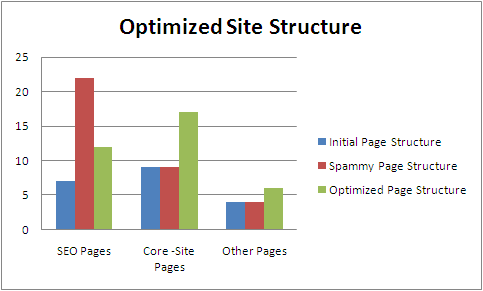There is a difference between optimizing a site for the search engines and optimizing a site correctly. Let’s face it, just about anyone can write keyword rich content, throw it up on a site, gather some backlinks and claim that they delivered everything for the campaign. However, without some sort of strategy in place, all the work from this SEO program is going to have minimal impact – if any at all.
This is where it is important to evaluate each website on a case by case basis. One of the first steps to becoming a successful SEO company is to move away from the “cookie cutter” approach and customize each client’s SEO program in a way that will achieve the maximum benefits.
Let’s start off with a brief background on the search engines. Every SEO knows that the search engine’s algorithm is built to take into account things such as keyword density, title and tag optimization, incoming links, and more. What some SEO’s don’t know, especially those that are new in the industry, is that the search engine algorithms are also very good at picking up spam. But here is the thing, except in some rare cases, there aren’t humans evaluating your website to determine whether the content or backlinks are spammy, the algorithm has certain “red flags” or alerts in place that label a site as spammy.
Avoiding Link Spam Through Gradual Increases
There are a variety of things that can mark your site as “spam” when it comes to links, including but not limited to, links from less than reputable sources, an influx of “optimized” links –particularly all with the same anchor text, or a sudden increase of links from one period to the next that is clearly out of your normal link growth. The search engines don’t want you to go out and “Do Linking” because in reality, that is a blatant attempt at deceiving them. The search engines believe that if your content is good enough, you will acquire the links naturally. For this reason, it is important to make sure that when you do linking, it follows the same basic trend that your site has seen over the years – only a bit more ramped up. For example, www.examplesite.com has been active for 5 years. On average they gather about 100 backlinks to their site a month. If an SEO company comes in and immediately procures thousands of links for the site, they are going to look like they are spamming the search engines, and possibly be blacklisted.

Ideally You want to be on the Green Line which mimics your site's historical link growth, but on a slightly elevated scale
Optimally, you want your link growth to stay constant just on a higher level as seen in the graph above. This will alert the search engines that you are increasing your authority through the number of backlinks you have, but not in a way that makes it appear unnatural.
How to Avoid Content Spam
The same rules that apply to gathering back links apply to adding additional pages. Again, lets do a little overview of the search engines. You can go into any of the major search engines and find out exactly how many pages of your site they have found and placed in their index. Don’t be fooled into thinking that the search engines do not pay attention to this number because they most certainly do. Lets go back to our example site. Again, www.examplesite.com has been active for 5 years. In that time, they started off with a 10 page website and as time went on, they added a few more pages over the years, bringing them up to a grand total of 20 pages today. Again, the inexperienced SEO company comes in, adds 15 new, highly optimized pages of content all at once, wipes their hands off and calls the job complete.

Again, You want to be on the green line where you are slowly building content over a period of time
Well what do the search engines see? The truth is, they see a red flag, but they aren’t prepared to take action on it just yet. Sites add new content all the time and sometimes in bulk, but this smells like something they might want to investigate further. This small website has effectively doubled in size since the spiders last came through and every page seems to be similar in length and keyword density. If the search engines determine that these pages are in effect, doorway pages, they just might remove the new pages from the index – or worse, the entire site.
So how do you combat this? You space it out. You find creative ways to integrate the SEO content into the core of the site instead of an obvious “SEO Page” section (not that you would ever name a page that right?). You experiment with varying content lengths so the search engines don’t see what appears to be the same page multiple times. In other words – Make it Look Natural.

Varying Content Types allows the search engines to see a more natural approach to your content integration. Increasing the number of pages while keeping the ratio of the existing site (for the most part) is the optimal way to achieve this
All of this can seem very hard to do, especially when you are under the constraints of delivery dates on a contract, but an experienced or at least a professional SEO company will have enough forward thinking to plan these things out for you.



Leave A Comment